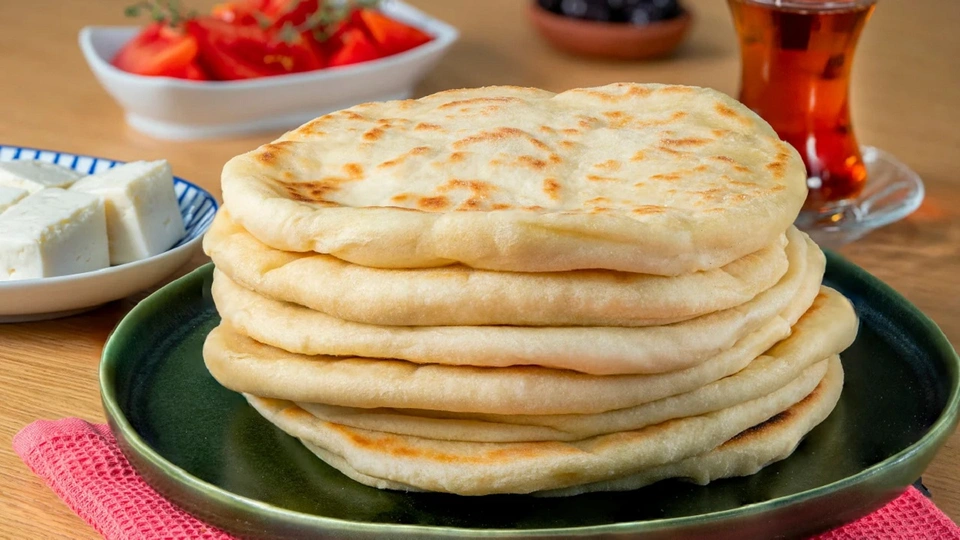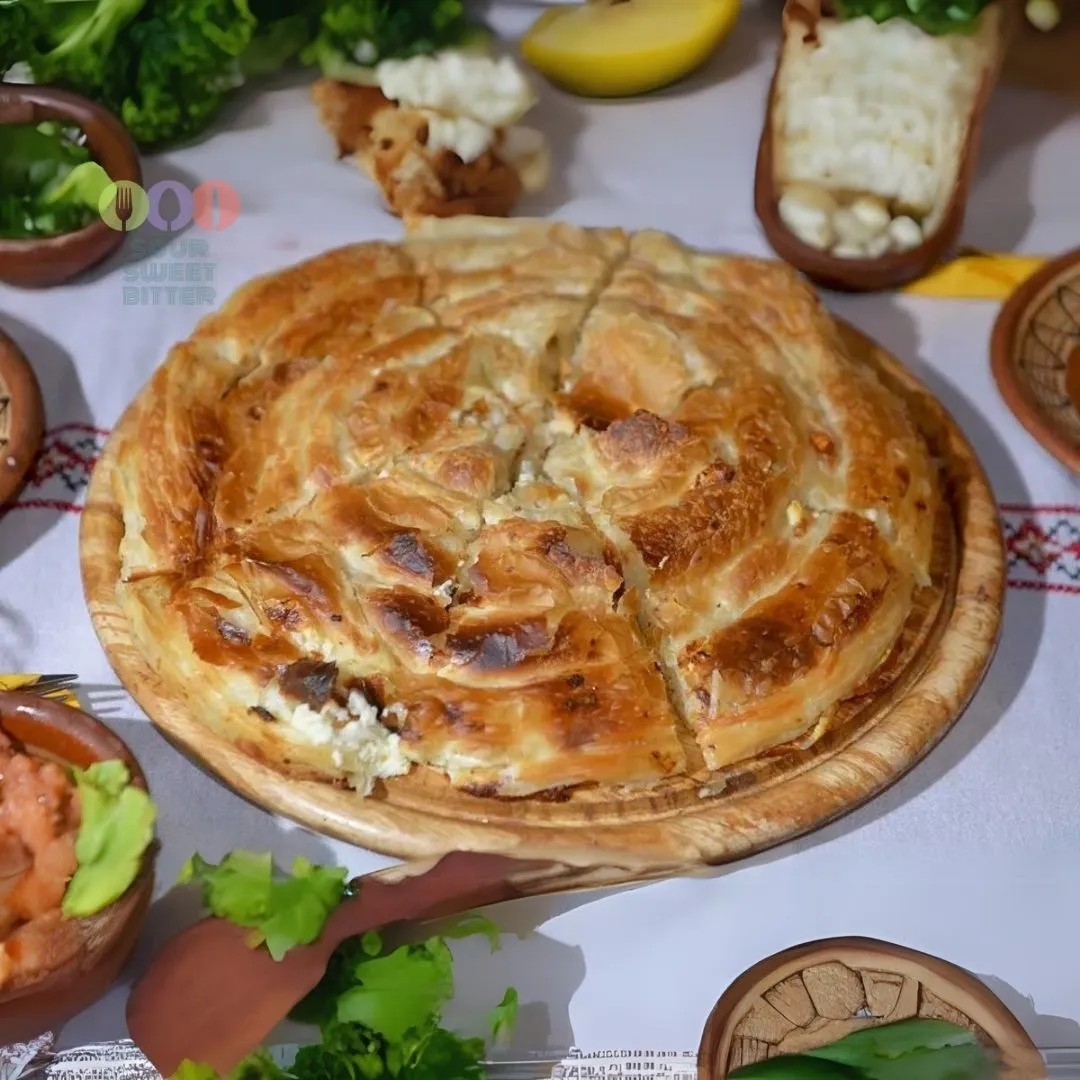Bazlama: A Traditional Turkish Flatbread
Bazlama, known as Turkish flatbread, is a beloved staple in Turkish cuisine. Its soft, fluffy texture and slightly tangy flavor make it versatile and popular. Originating from different regions in Turkey, it is often served with meals or used in sandwiches. Traditionally, people cook bazlama on a griddle, giving it its golden-brown surface.
Bazlama has its roots in rural Anatolian villages, where families have made it for centuries. It holds a special place in Turkish homes, especially in villages where people still bake bread at home. Families often prepare large batches and store them for later, though freshly made bazlama is always best.
A Versatile Bread for All Meals
Bazlama’s soft texture and mild taste pair well with many dishes. It complements a traditional Turkish breakfast of olives, cheese, and tomatoes or helps scoop up meze (appetizers). You can also use it to make wraps filled with grilled meats or vegetables, perfect for lunch or dinner.
Nutritional Benefits
This bread typically consists of simple ingredients like flour, water, yeast, and salt. This makes it a healthier choice compared to commercial bread, as it contains no preservatives or additives. Combined with fresh vegetables, protein, and healthy fats, it can be part of a balanced diet.
Discover Traditional Turkish Recipes Discover Traditional Recipes from Europe You may like this also: Uzbek Samsa
Turkish Bazlama
Instruction
Bazlama is a traditional Turkish flatbread with a soft, fluffy texture and golden surface. Perfect for breakfast, wraps, or as a side dish, it's made with simple ingredients like flour, yeast, and water. A versatile and healthy bread option that’s easy to make at home.
Ingredients
Instructions
-
First, let's take the flour and salt into our kneading bowl and make a hole in the middle.
-
Let's add warm water, instant yeast, sugar and olive oil to this hole and knead the dough by slowly adding flour from the edges to the liquid part in the middle. The softer your dough is, the softer your bread will be. The softness of your dough will also increase the stickiness. To prevent this, you should wet your hand with a little water or oil while gathering the dough.
-
After gathering the dough, let's stretch it and cover it with a clean cloth so that it is warmer and let it ferment for about 1 hour.
-
Let's open the dough that has fermented and let's get rid of the air.
-
Then let's take our dough to the counter that we sprinkled with flour and gather it quickly.
-
Let's divide our dough into 8 pieces as equally as possible and let's shape each piece into a ball with our hands.
-
Let's cover our balls with stretch film so that they don't dry out while waiting.
-
Let's open our balls in order to be half a cm thick and almost 1 plate wide. Using dough while rolling will make our job a little easier. Since I will not be rolling it very thin, I rolled it with a rolling pin, but if you want, you can also roll it with a rolling pin. If you do not have a rolling pin or a rolling pin, you can keep your dough smaller and roll it out with your hands.
-
Let's put each dough we rolled out on a clean cloth and cover it so that it does not dry out.
-
After all our dough is done, let's heat a non-stick pan, place our first dough on the pan as we took it from the cloth and cook it under control over medium heat.
-
Let's turn our bazlama whose edges start to swell slightly once. It is important to turn it a few times while cooking the bazlama.
-
Let's turn it when the other side starts to swell slightly.
-
Let's turn our bazlama that has swelled like a balloon a couple of times so that both sides cook without burning, let's take it out of the pan and onto a clean cloth.
-
Our cooked bazlamas are ready to serve. Afiyet Olsun!
Note
While making your bazlamas, you can double the amount if you wish and store the excess in a refrigerator bag or double-zip-lock bag in the freezer and keep it fresh.














